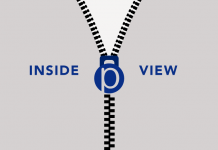
Identifying the barriers that lead to a poor customer experience (and increased traffic to the call center) requires an enterprisewide review of customer touchpoints and call drivers. The following are brief looks at three contact centers that are successfully driving end-to-end process improvements to ensure the optimal customer experience.
Be the Service Delivery Champion
Like many organizations, U.S. Green Building Council’s (USGBC) contact center relies on subject-matter experts across departments for knowledge and content. To streamline the process for tapping that expertise, contact center leaders reached out to the other areas to demonstrate the individual and organizational benefits of improving service processes. They explained the center’s vision and goals, and developed standards for email response time and a service-oriented phone call, as well as a calibration process to ensure that everyone was in agreement. Once other departments understood that the stronger the contact center grew, the less volume they would have to handle, they were very receptive to maintaining response time goals. Center leaders keep other departments updated through monthly service bulletins that highlight the contact center’s metrics and show how they’ve trended for the past six months. The updates also identify the top 10 call and email reasons and describe the projects dedicated to resolving those issues.
Develop Shared KPIs Across Departments
Cardinal Health’s long-term objective is to ensure that the entire channel — contact center, branches, stores, back-office operations—is using metrics that reflect the customer service strategy. The customer service team works with the company’s various businesses to develop shared key performance indicators (KPIs) associated with the organization’s overall performance (e.g., improved customer loyalty scores, quality metrics). Having shared KPIs is critical to getting multiple departments to work together toward a common goal, and to prioritize process improvement efforts.
Unified, crossfunctional Six Sigma Black Belt and Kaizen teams then drive targeted business process improvements. The teams identify process challenges and then collectively identify the root causes of problems so they can develop the best crossfunctional solution. Including representatives from multiple areas (customer service, sales, IT, communications, operations, etc.) in these initiatives helps departments across the organization to embrace change by actively engaging them in the process of identifying customer satisfaction challenges and in implementing improvements to address those challenges.
Change the Process, Not the Agent
Contact center leaders at H&R Block have reported significant performance improvements by changing its mindset — where management used to focus their attention on changing the agents, they now concentrate on changing the process instead. The Client Service Operations management team came up with a three-pronged approach to focus on process excellence:
• Prevent and eliminate as many call drivers as possible. Figure out what customers are calling about in the first place, which of those contacts are non-value-add, should not be occurring, are defects in the process or with the product, and are causing barriers for the client that result in calls.
• Optimize the self-service environment. How can the company leverage an IVR that can provide self-service balance and transaction information for clients? Could the Web site be leveraged to allow customers to update their account information so they don’t need to call?
• Provide better, faster answers that maximize issue resolution and customer satisfaction.


